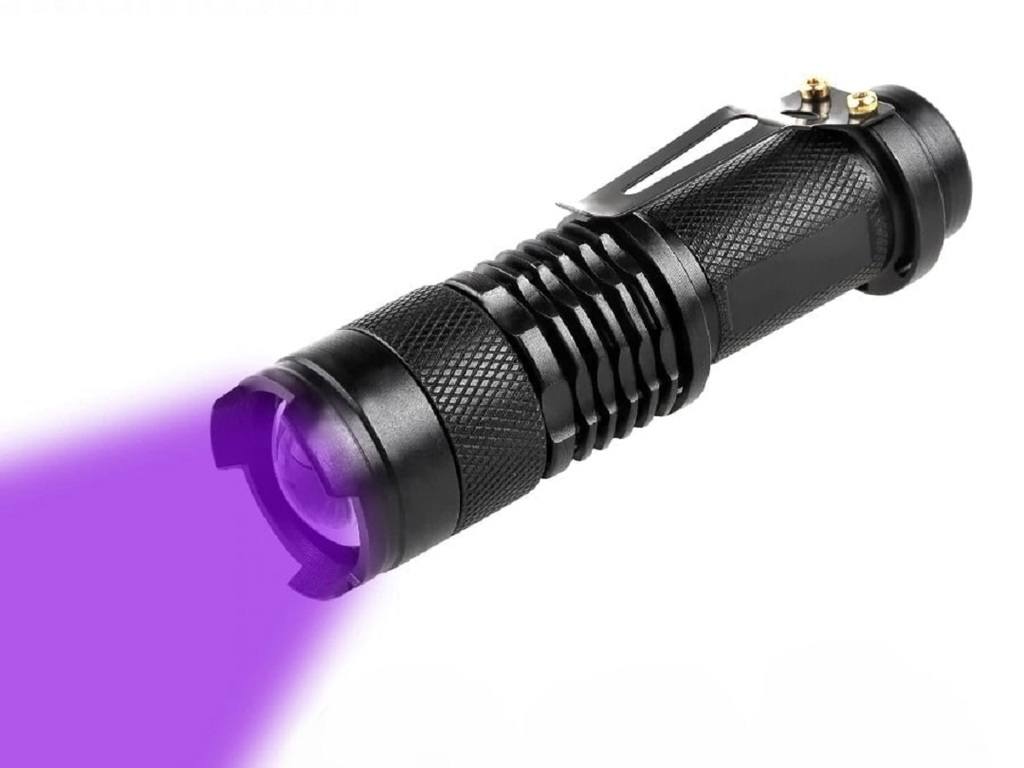Can a Blacklight Kill Bed Bugs? What You Need To Know.
Most people have had the luxury of a vacation at least once in their lifetime. One often fantasizes about what they will see, the hotels or rental home they will stay, and the experience they will have. I can say that until the last ten years, thinking of bedbugs was not on my radar. There have been numerous reports over the years about the bedbug epidemic found throughout the US.
Although you might not have bed bugs in your home, it is very possible that your next-door neighbor might be infested with these nasty pests. In fact, according to a report, an alarming one out of five Americans has had a bed bug infestation in their home or knows someone who has encountered bed bugs at home or in a hotel. How to combat this possibility is paramount for the health of you and your loved ones. You try to find what remedies or pesticides can kill these critters if you are to prevent or if you are unfortunate to have this happen to you and come across the use of UV light as a possible solution to this problem.
So, “can a blacklight kill bed bugs?” The answer is, unfortunately, No. According to Physicist David Rosen, CUNY, bed bugs are covered by Chiton and wax which blocks UV light. Therefore, the most effective way to kill bedbugs is by using heat from a blow dryer or clothes dryer. But a UV Flashlight can be a useful tool in the war against bed bugs. If you are in the process of removing these pests, you have to be careful not to disturb these bugs so suddenly, for it might allow them to scatter and harder for you to find. With the use of black UV light, bed bugs that hide in places you don’t expect them to hide would be easier to detect.
What Are Bed Bugs?
The only reason why these pests are called “Bed Bugs” is that they are often found on your mattress bed. These are insects that feed on warm-blooded animal’s blood — a.k.a mostly humans. An adult bed bug can be as long as a quarter of an inch long and has an oval shape when unfed, and a swollen elongated shape when fully fed with human blood. Often times, these pests have a mahogany color when unfed, and red color when fed.
Bed bugs leave painless bite marks on your skin that can be confused with other skin-biting insects which makes them difficult to identify. Don’t worry though, bed bugs do not transmit any form of deadly diseases, or diseases in general and their bites can easily be treated with steroid creams.
There is more information about bed bugs here.
Why Even Bother with Bed Bugs?
These tiny insects may not be a deadly threat, but what’s horrifying about bed bugs is its fast reproductive process. A female may lay about 1-5 eggs PER day and may reach about 541 eggs in their lifetime. These little creatures are often nicknamed as “hitchhikers” because they can easily attach themselves to many things which allows them to reproduce on a grander scale.
The fact that bed bugs can reproduce on a fast and grand scale is the horrifying parts of it. Imagine hundreds of these creatures biting latching on to your skin at night, drinking your blood.
Steps in Getting Rid of Bed Bugs.
Step 1: Detection
Before you even get rid of bed bugs, first you must put an effort into finding where they are lurking in your household. The best way to do that is invest in as simple a black UV light. UV black light have a plethora of uses from attracting insects, promote melatonin production (or skin tanning), artwork illumination, disinfections, and many more medical applications. But for this particular case, UV Black light can be used to detect pests such as the common bed bug.
There are several options to choose from online, but here are the best Black lights you can purchase right now.
UVON Ultraviolet UV LED Flashlight
The UVON flashlight can cover an area of up to 50 meters, using a 5 watt voltage, and a 395 nanometer wavelength. Having a UV blacklight can also assist in detecting pet urine stains, scorpions, counterfeit currencies, and ID cards. It’s made with a high quality aluminium alloy which perfectly describes its durability. It only needs three (3) AA standard alkaline batteries and it’s ready to be used. To purchase this product, click here to proceed to Amazon.
GearLight UV Black Light Flashlight
The GearLight UV flashlight work by revealing phosphors – a substance that emits and glows under UV lighting because of radiation. Since we cannot see phosphors under normal human eyes, we need to rely on ultraviolet light to spot them, and the blacklight makes this possible To purchase this product on Amazon, click here.
LSSB Ultraviolet Black Light Flashlight
On Amazon, this particular product is marketed as one of the most powerful and popular UV Flashlight being sold on the platform. LLSB has a better UV transmission than the other two mentioned, most reviews and comments on amazon would vouch for this product. To purchase this product, click here.
Step 2: Preparation
Now that you have an easy option to detect bed bugs without really directly spreading them, you now need to prepare. Tempted to move the mattress around this may alarm the swarm of bed bugs and cause them to spread like wildfire. Follow these carefully thought guidelines:
- Remove all mess lying around. Remove all possible clutters on the floor such as books, electronics, and clothes that these bed bugs may hide and latch onto furthering the spread.
- Close any entry and exits in the room involved. To avoid the further spread of these pests, make sure the room being inspected is clear of all entry and exit ways including cracks on the wall. Cover the cracks on the walls first to halt the spread to other rooms in the house.
- Place the bed in the middle of the room. The bed is the main focus breeding ground of bed bugs. By putting the bed in the middle of the room before an inspection and away from other furnitures will lessen the chances of bed bugs latching unto other furnitures and hiding. Once the room is all prepped you a now start using the UV Black light for detection.
After preparing the room, carefully take out the bedding and bag it up. Inspecting the bedding will be done later after inspecting the mattress and bed frame.
Step 3: Kill the Suckers.
There are two different ways to kill bed bugs according to the United States Environmental Protection Agency (EPA). First are the non chemical methods and the use of pesticides (or the chemical methods). It depends on the house owner which method to use but always make sure that the method chosen is EPA-approved.
Non Chemical Methods
- Heat Treatment — this type of treatment involves raising the temperature where bed bugs are swarming to kill them. Bed bugs die when the environment surrounding them reach about 45 degrees Celsius (113 degrees Fahrenheit). Clothes dryer on high eat may be an available option but EPA suggests to purchase a portable heat chamber to do the trick.
- Cold Treatment — this is only successful is the you set the home environment freezer to 0 degrees Fahrenheit. This is particularly useful when you have bed bugs on certain small objects, you can place them in plastic bags and put them inside the freezer.
- Steam Cleaners — steam cleaners are perfect for killing bed bugs that are found in carpets, bed boards, frames, and other furniture. The steam temperature must be 130 degrees Fahrenheit as suggested by EPA.
Chemical Method
Calling an EPA-certified pest management professional would definitely help in removing bed bugs in the household — and the better option. Yes of course it will cost a lot but it sure is worth it. Often these professionals would even suggest to use Foggers (bug bombs) but must be handled with extreme care.
If you are thinking of using pesticides, EPA particularly suggests Desiccants (chemicals that dry things out) this way it would dry out the bed bugs and all you have to do is call a professional cleaner.
To find out EPA registered pesticides, click here.
Final Thoughts.
Bed Bugs infestation is the worst possible scenario that may happen in your household. Not only that these pests technically look scary when placed under a microscope, their reproduction rate is even scarier. These bugs are not deadly but are a nuisance to every day life. Make sure when sleeping in a foreign bed that you identify if the bed has been thoroughly cleaned and prepped to be use by someone else. These creatures attach themselves to regular objects that you might accidentally bring in to your own homes after a week spent on the road and nights spent in motels.

